#jewish silversmithing
Note
(apologies in advance if this is a weird or offensive question, I'm just curious about the history)
Is judaica the same across Jewish communities of all global regions? Like do Asian, African, and European Jewish people have different types and styles of judaica, or is it generally all the same? I figured being dispersed across such varied areas would cause some divergences in how different cultural artifacts would look, but my cursory google searches have been unhelpful, both in finding judaica itself and in even getting any information on non-European Jewish communities.
I know this is probably a really ignorant question, but I like learning about different cultures and the history and evolutions of their artifacts.
There absolutely are different styles of Judaica!
Jews have been dispersed around the world, and thus our art has taken on many forms.
I will say though that a lot of Jews don't identify with just "Asian", "African", or "European". We are Jews. Our identity is Jewish. We have different labels that reflect where our ancestors found themselves in the diaspora at different points in history, but the three labels "Asian", "African", or "European" are far too simplistic. Ashkenazi, Italki, and Sephardi Jews have ties to Europe; Sephardi and Mizrachi and Ethiopian Jews have ties to Africa; Sephardi, Mizrachi, Bukharan, Cochin, and Kaifeng Jews have ties to Asia; all while being widely different and diverse subgroups and traditions. (There are far more different Minhagim than the ones I mentioned, by the way, I just mentioned a few as examples.)
Anyway, as for our Judaica.....
Of course it varies! We have had thousands of years to develop different art styles and techniques, although you will find certain motifs that arise often throughout most Judaica styles, such as Stars of David, lions, crowns, pomegranates and all of the rest of the Seven Species of Israel, eyes, hands, and fish.
Since it's almost Chanukah, I'm going to use different Chanukiyot as examples of the variations. I'm by no means an art historian, these are my notes based on what I've learned and read, and from observations.
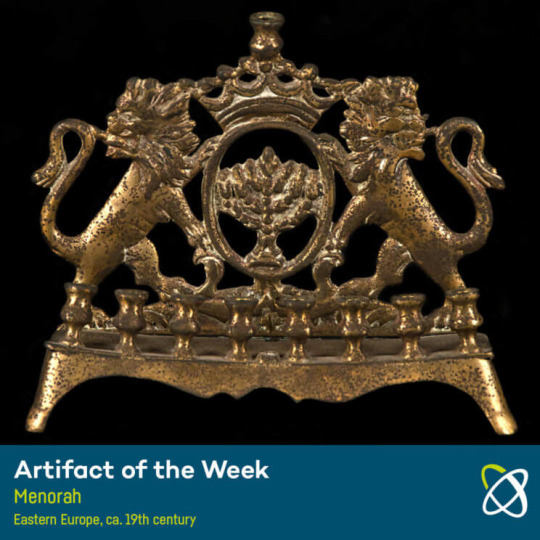
Here is a classic Eastern European Chanukiyah. Here you can see two lions holding up a depiction of the seven-branched Temple Menorah, with a crown atop. It's made of bronze. This style of Chanukiyah was very popular, and had many variations. Sometimes the Temple Menorah was replaced with other motifs, such as the Ten Commandments, a Star of David, or some other symbol.
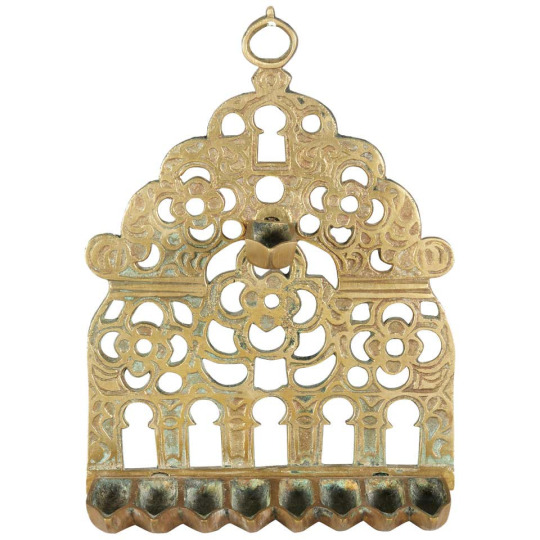
Here is a Moroccan Chanukiyah. You can see here that it's meant to be hanged on a platform or wall. It looks like it's made of copper. Already you can see the difference between this one and the previous one. You can see it has the floral and keyhole repeating patterns that are familiar in Moroccan art, and in fact this Chanukiyah here is intended to be lit with oil wicks, not candles, like the previous one.

This Chanukiyah isn't an antique, it's a modern design, as you can see by its oblong shape and reversable nature (it's supposed to be flipped over to serve as Shabbat candlesticks, too) however, it exemplifies the beautiful Yemenite Jewish silverwork. Silversmithing was historically a Jewish profession in Yemen, as Muslims were forbidden from silversmithing. Yemenite Jews acquired a reputation for their incredible silverwork. You can see how intricate the details are, the swirling, repeating patterns and leaves.
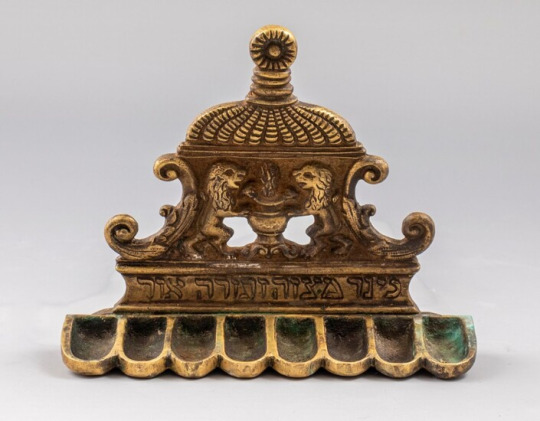
Here is an Italian Chanukiyah, likely from the 18th century. You can see the twin lions here again, only this time they're holding a flame. This Chanukiyah is also made for oil wicks, not candles. (Oil wicks are the more traditional and older way to light the Chanukah lights.) On it is enscribed in Hebrew, "Like the flame of Mitzvah and the Torah of light". There's also different designs than on the Eastern European Chanukiyah, such as the leaves and filigree, and the domed "roof".

And finally, here is an elaborate silver Ukranian Chanukiyah from the 19th century. This was once in the Great Suburban Synagogue in Lviv, and survived Nazi occupation. This is obviously a far more elaborate design than an average household would have, as this was in display in a syngogue and was intended to be a prominent peace of art. You can see again, more lions holding up the base of the lamp, and flowers and leaves and filigree, and a bird perched on top. The original Temple Menorah was described as having bulbs and flowers, and thus many Chanukiyah designs embody this by including such motifs in their designs.
These were only a few examples I was able to hobble together, and honestly you're right, anon, there aren't many accessible resources outlining the history and variation of Judaica.
Here's some further reading about Jewish art if you're interested:
Jewish Art: A Brief History
Jewish Art in the Ancient World
Ancient and Modern Art
Goldsmiths and Silversmiths
Jewish Art in Medieval and Modern Times
And this isn't educational, but it's a really interesting article:
Jewelry and Jewish Feminism
[id in alt text]
565 notes
·
View notes
Text
🖤✨— During the past few weeks, I’ve been teaching myself how to solder, among other things such as fabricating bezels for necklaces from sterling silver sheet metal and wire. In the photo above, you’re actually looking at a memento I made for a good friend of mine - this is her dog (Biminis) blood casted with epoxy and set into the bezel! Biminis is still with us today, but this memento will be something to hold onto forever! I’ve also been experimenting with doing the same thing with ashes as memorial pieces for animals that have passed away. For those who might have questions, please feel free to DM me! This process is completely safe, and no animals were harmed in the making of this!—— .
.
.
.
https://www.instagram.com/bent_artistry?igsh=MWsxMHB1Znd2c2F1aw%3D%3D&utm_source=qr
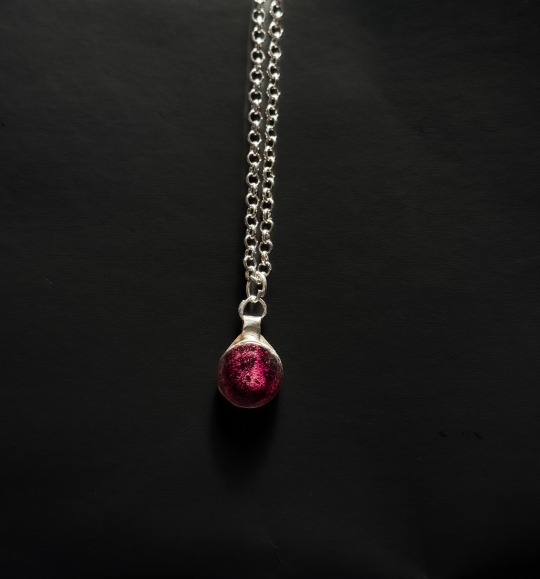



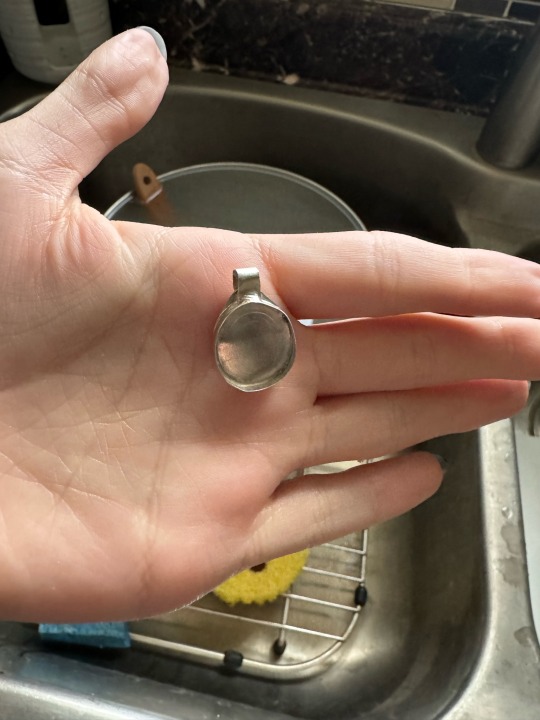

#gothic#vampcore#gothcore#goth jewelry#jewelry#diy craft#epoxy#tw blood#bloodborne#bloodweave#bloodletting#fire and blood#bloddy#avatar the last airbender#blood smith#heavy metal#metal#metalsmith#silversmith#jewish#jewellery#jewerly#emo girl#emo jewelry#oddities#odditycollector#oddity art#animal art#alternative clothing#alchemy tat
10 notes
·
View notes
Text
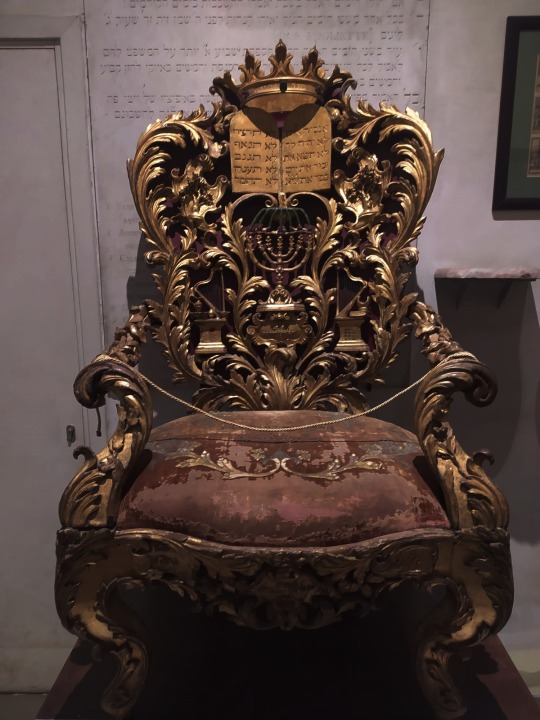
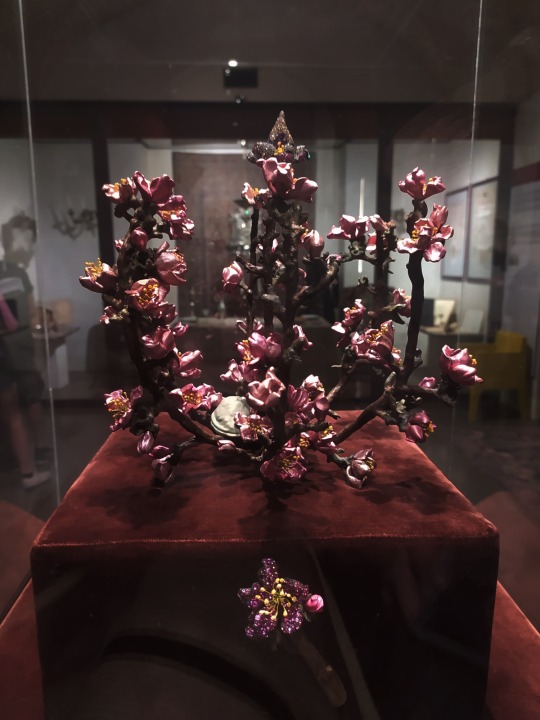
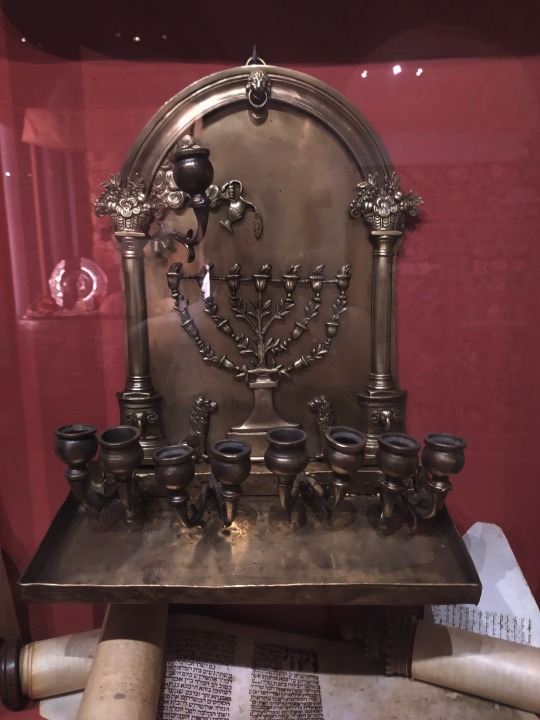



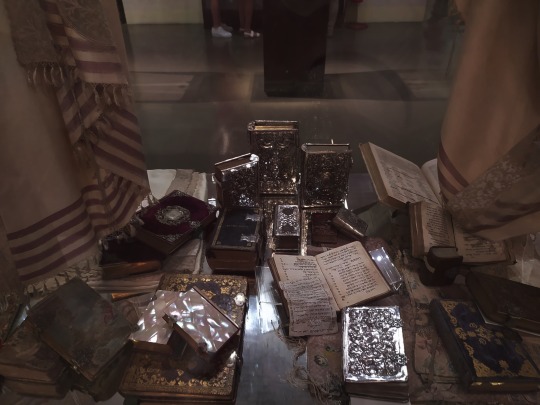

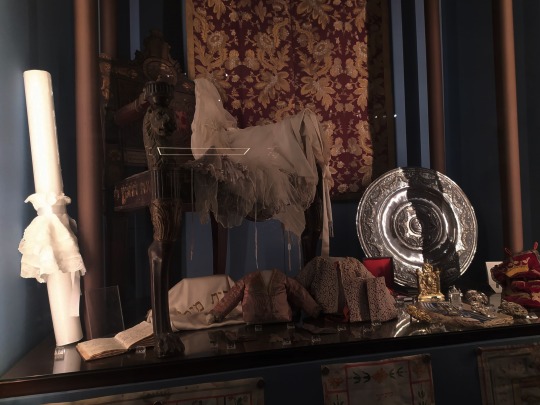
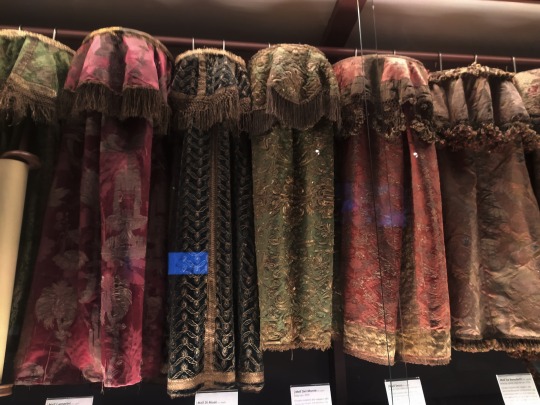

The Jewish Museum of Rome is located in the Great Synagogue monumental complex. Walking across the different rooms you can see a reconstruction of Jewish life in Rome since the earliest settlement in the second century before the Common Era.
The Jewish community has been living continuously in Rome for 2,200 years, making it one of the oldest communities outside of Israel. The exhibits on display in the museum date back principally to the ghetto period (1555-1870) and all come from the original ‘Five Synagogues’ building.
The rich collection includes liturgical furnishings, manuscripts, incunabula, historical documents, records and marble works.
Since 1960, the museum displayed its treasures in a single room, but the study and cataloguing of all the works required a larger display area. The new exhibit was inaugurated in 2005.
The museum covers an area of 700 square meters and unfolds through seven rooms with different themes. It offers a reconstruction of the Jewish people life in Rome and shows us how they managed to integrate into the socio-economic structure of the city, while they maintained their own identity.
#jewishmuseum#jewishhistory#jewishart#argento#jewish#architecture#jewishquarter#j#artwork#jewishghetto#silver#judaicaartist#workofart#silverjudaica#silversmithing#jewishculture#museum#metalart#silversterling#silverjewelry#hammerwork#jewishrome#rometourguide#romanhistory#argint#silverware#unicart#roma#repousse#rome
4 notes
·
View notes
Text
It's really weird watching/reading things that talk about my culture in the past tense. It's like, I'm still here, you know?
#inspired by a video that talked about the art of Yemenite Jewish silversmiths and jewelry where the lady talked about it in past tense#and like#Yemenite Jewish silversmiths still exist#I bought a pair of earrings from one a few months ago#They might not be in Yemen anymore but they're still around#we're still around
6 notes
·
View notes
Photo

The Jewelry of Urban Jewish Brides in Morocco
Sefrou, Morocco
The Jewish bride's headdress (sfifa or taj) gave her a regal look, and its unique style singled her out from Muslim brides. Her earrings (khoras kbash, "ram's head"), which reflect a Spanish influence, are considered prime examples of the high artistic quality of Jewish silversmithing in Morocco. She wore a necklace (tazra) with a central pendant adorned with motifs of pomegranate buds and inlaid with precious stones, and her hands were bedecked with bracelets (shems ugmar, "sun and moon"). The bird on the brooch was initially a predominantly Jewish motif, and only later became common among Muslims as well.
897 notes
·
View notes
Video
youtube
Jewish silversmiths: Amazigh (Berber) jewelry from North Africa, April 27, 20221
Amazigh ear pendants, early 20th century (Anti-Atlas Region, Morocco), silver alloy, enamel, glass, and carnelian, 34.4 x 20.3 x 2.9 cm (Smithsonian National Museum of African Art, Washington, D.C.)
A conversation between Dr. Peri Klemm and Dr. Beth Harris
Smarthistory
Moroccan Jewish artist, Ear pendants, early 20th century
Morocco
Silver alloy, enamel, glass, carnelian
34.4 x 20.3 x 2.9 cm (13 9/16 x 8 x 1 1/8 in.)
Current Exhibition: Visionary: Viewpoints on Africa's Arts
With their practical and technical knowledge, African metalsmiths and casters create utilitarian objects and elaborate works of art. Archaeologists now estimate Africans have smelted ore, traded metal and cast or forged tools, weapons and objects for 5,000 years--long before European contact. After foreign trade routes were established, the arduous process of refining raw ores, which required large amounts of charcoal, was replaced by the less labor intensive pattern of buying iron rods and ingots of copper or brass that could be melted at the forge. At other times imported metal objects were melted down and recycled. With the increased availability of raw materials, the production of imaginative and intricate tools, weapons, jewelry, sculptures and currency flourished. Many individuals and communities stored, traded and displayed their wealth in the form of jewelry and nonfunctional currency blades rather than as coins or bar ingots. Silver jewelry is considered portable wealth throughout the mountainous Atlas region of Morocco. Women wear impressive displays of elaborate jewelry during important public gatherings, especially weddings, where silver symbolizes honesty and purity. The collection history and style of these ear pendants, which are worn suspended above the woman's ears, attached to her hair and affixed to a central forehead ornament, suggest a Jewish artisan made them for a Jewish client.
National Museum of African Art, Smithsonian
#Amazigh#Imazighen#Berber#art#art history#Moroccan#Jewish#jewellery#silver#enamel#filigree#glass#stone#carnelian#minerals#metal#20th century#National Museum of African Art#Smithsonian#fashion#costume#period dress#early 20th century#cloisonne#north african
11 notes
·
View notes
Text
Dungeon23 22feb23 hex 8,3 - Yiddisher Workshops

I realized today that we’re close to being done with Zamość, which is wild to me. It seems like both yesterday and forever ago I started this project. But that’s how development works: bit by bit, post by post. If any of y’all have ideas as to where next I might work, I’d love to read your suggestions.
Today we get into the industrial heart of Zamość. This eastern part of the city is where all the noisy, smelly stuff happens. Block 8,3 is a Jewish industrial block. We have silversmiths, (kosher) butchers, tanners, carpenters, masons, and more. No furriers, potters, or cobblers, however, as the Jews of Zamość are prohibited from these trades. Both artisans and their apprentices live together above their workshops. The raw materials likely pass through the Lvov Gate to the southeast (the New Lublin Gate on the underlying map hasn’t been built yet), traveling through all the goyish workshops first.
The people here are hardworking, industrious even. Unlike the rest of the Jewish blocks, the folk here are used to working with goyish customers, and if you come to them speaking German or Polish, that’s how they will see you. Come to them speaking Yiddish, or better yet, Arabic, and they will open their hearts. Remember that Zamoyski, at the founding of the city of Zamość, sought out Sephardi Jews to settle there. While in the real world this didn’t work out particularly well, in Nowa Polska, we have a host of Sephardi Jews from the Ottoman invading army that was stranded shortly after 1520 and were later welcomed to Zamość. In the century since, the Jews of Zamość would have learned Yiddish, the lingua franca of the Jews in Nowa Polska, but their first tongue would still be Arabic, one of the few remnants of their origin they could still access.
This block is primarily useful as a place to order custom goods, work out delivery contracts for players interested in operating a trade caravan. Players who befriend the artisans here could apprentice a family member to them, giving them stability and the promise of a trade to support them throughout their life. Not appealing to many players, perhaps, who don’t like to put roots down deep in a community, but I hope your players do. This apprentice becomes a source of rumors and gossip filtered from their interactions with artisan and fellow apprentices, often exaggerated, sometimes false, but perhaps lucrative. Depending on how you track time, how long injuries take to heal, how much winter snow impedes your players’ adventuring, this apprentice could become an artisan in their own right when the next generation of characters travel out-of-doors.
#dungeon23#city23#zamość blocks#city blocks#blocks#osr#ttrpg#ttrpg design#indie ttrpg#nowa polska#gelgelim
1 note
·
View note
Link
Check out this listing I just added to my Poshmark closet: Yemen Bedouin Hirz Amulet Prayer Cylinder Necklace.
0 notes
Text
Bier Judaica

Welcome to Bier Judaica, handmade silver Judaica designs for over 70 years. Their products are made of sterling silver with the additional use of glass, aluminum, and wood, With these, Bier Judaica design classic and modern pieces using traditional silversmithing techniques, made in Jerusalem, Israel.
Product lines include Judaica such as Kiddush cups, Shabbat centerpieces, Jewish holidays gifts, and many more Judaica items as well as beautiful decorative silver designs such as vases and wine bottle canisters.
Bier Judaica invite you to have a browse and find your next gift, whether for weddings, housewarmings, a Brit, a Bat/Bar Mitzvah, or just something special for your own home.\
Find out more information about silver jewelry
0 notes
Text

An article from june 3 of 2020
The Holy Grail of coins has just popped up for sale. The 1787 Brasher Doubloon was the first gold coin struck in the US and represents one of the most important pieces in America’s numismatic history. It was originally worth about $15, but is currently being offered privately for 1 million times that price.
The coveted coin was privately minted in 1787—five years before the federal mint opened—by Ephraim Brasher, a New York silversmith, who lived next door to George Washington.
“It was the first gold coin in the denomination dollars, and it set forth how our monetary system would move forward,” numismatic adviser and president of PCAG Inc.
gold is a sacred metal (precious)
made by our Creator
fashioned into the crowns of True kings & queens
yet even these submit themselves in humility by bowing before the eternal King of the universe
do you see this?
A reprise of lines from Today’s reading of the ancient book of Revelation that John wrote down:
After these things, I looked; and there before me was a door standing open in heaven; and the voice like a trumpet which I had heard speaking with me before said, “Come up here, and I will show you what must happen after these things.” Instantly I was in the Spirit, and there before me in heaven stood a throne, and on the throne Someone was sitting. The One sitting there gleamed like diamonds and rubies, and a rainbow shining like emerald encircled the throne.
Surrounding the throne were twenty-four other thrones, and on the thrones sat twenty-four elders dressed in white clothing and wearing gold crowns on their heads. From the throne came forth lightnings, voices and thunderings; and before the throne were seven flaming torches, which are the sevenfold Spirit of God. In front of the throne was what looked like a sea of glass, clear as crystal.
In the center, around the throne, were four living beings covered with eyes in front and behind. The first living being was like a lion, the second living being was like an ox, the third living being had a face that looked human, and the fourth living being was like a flying eagle. Each of the four living beings had six wings and was covered with eyes inside and out; and day and night they never stop saying,
“Holy, holy, holy is Adonai, God of heaven’s armies
the One who was, who is and who is coming!”
And whenever the living beings give glory, honor and thanks to the One sitting on the throne, to the One who lives forever and ever, the twenty-four elders fall down before the One sitting on the throne, who lives forever and ever, and worship him. They throw their crowns in front of the throne and say,
“You are worthy, Adonai Eloheinu,
to have glory, honor and power,
because you created all things —
yes, because of your will they were created
and came into being!”
The Book of Revelation, Chapter 4 (Complete Jewish Bible)
there will come an open door to Heaven at some point for all those who truly “believe…” in Son(Light)
(even A secret elopement for a heavenly marriage to come…)
there is A new Adam and Eve who will never pass away
“A river flowed from Eden to irrigate the garden, and from there it separated into four smaller rivers. The first, the Pishon, flows around the land of Havilah—a rich land plentiful in gold of premium quality, bdellium, and onyx stones.”
The Book of Genesis, Chapter 2:10-12 (The Voice)
•
the whole world trusts in gold as money since it can be used anywhere, which means it can be sold for whatever currency is needed to buy or sell something. and so do we trust in Federal Reserve notes?
to be honest the creation of the Federal Reserve in 1913 has not been a good direction to manage the economy of the United States even though the dollar eventually became the reserve currency of the world
we have become a nation that sells debt, printing more and more dollars through the creation of treasury bonds and bills and notes that translate into federal reserve notes to circulate around the world, physically and digitally
and does anyone remember the personal confiscation of gold in America in 1933?

an act of treason really against the U.S. Constitution:
Article I, Section 10, Clause 1:
No State shall enter into any Treaty, Alliance, or Confederation; grant Letters of Marque and Reprisal; coin Money; emit Bills of Credit; make any Thing but gold and silver Coin a Tender in Payment of Debts
•
“No state” at the time way back in the 1700s when this was written would certainly seem to refer to the whole of the U.S. as it forms its own monetary system of exchange, yet the federal government has claimed exemption from this since it is not a “state”
the Federal Reserve is a powerful force as a central bank in working with the U.S. Treasury and the I.R.S. to manage the government and the country, yet the result has been a national surmounting debt and so something is certainly amiss as far as “honest” money goes
people aren’t perfect nor is any nation on earth, and there is much poverty even though it seems plenteous resources are available, with lack tearing away at the dignity of people who are made in the image of our Creator
there is no lack in Heaven, of course, but look at the way men have ruled the resources and nations of earth?
there is not an easy answer to achieve economic stability, yet we should still strive toward honesty in things. to form laws that are moral and good. we should fear God and operate business and government with integrity.
At least this is a good thought that was most probable on the minds of the founding fathers of the United States
and we’re all only here in this temporal time, looking forward to heavenly Authority
there now, and upon beautiful earth at some point.
0 notes
Text
JAHM Day 3 - May 3 / 2 Iyyar
Day 3 - The earliest made-in-America Judaica.
The earliest Jewish community in the (eventual) United States brought Torahs from Europe or South America, some of which dated back to the 15th century. There are no records indicating that new Torah scrolls were created in the United before the mid-19th century, but a variety of Judaica was produced by Jewish artisans to accompany Torahs and for the regular functions of Jewish life. Jews in the thirteen colonies were largely artisans and merchants, and produced much of their own Judaica. Jewish artisans in the thirteen colonies generally produced both Judaica and objects for general sale, and some became renowned for their craftsmanship.
One example of such an artisan was Myer Myers (1723-1795), a New York silversmith. Pictured below are a pair of Torah finials Myers made in the mid-18th century. They were used by the Jewish community at the Touro synagogue in Newport, Rhode Island to decorate and protect their Torah scroll.

Myers worked as a silver smith in New York for decades, creating high-quality silver pieces for both the Jewish community and the general population. His works for the Jewish community included shabbat candle holders, yads (pointers for reading the Torah), and otherwise regular objects with Hebrew engravings. Myers opened his shop in the 1740s and flourished through the 1750s. As other artisans in the thirteen colonies experienced, Jewish artisans like Myers increased production in the late 1760s and into the 1770s as boycotts against the importation of English goods increased. Production in Myers’s shop slowed and then ceased in during the Revolutionary War, as was the case with many artisans in New York and across the colonies. After the war production resumed, albeit at a much lower volume than before the war, and Myers was eventually elected first chairmen of the Gold and Silver Smith’s Society, which had both Jewish and non Jewish members.
Although very few little Judaica from the 18th and early 19th centuries has survived, Judaica in its many forms retains an important role in the functions of Jewish life from Torahs in synagogues to candlesticks on shabbat tables to decorative pieces and mezzuzahs.
Week 1 - 1492s-1800
Week 2 - 1800-1900
Week 3 - 1900-1950
Week 4 - 1950-Present
You can find the index of these posts here: Index
#jahm#jewish american heritage#jewish american heritage month#jahm 5782#JAHM 2022#Jewish Identity#jewish history#jahm week 1
0 notes
Photo
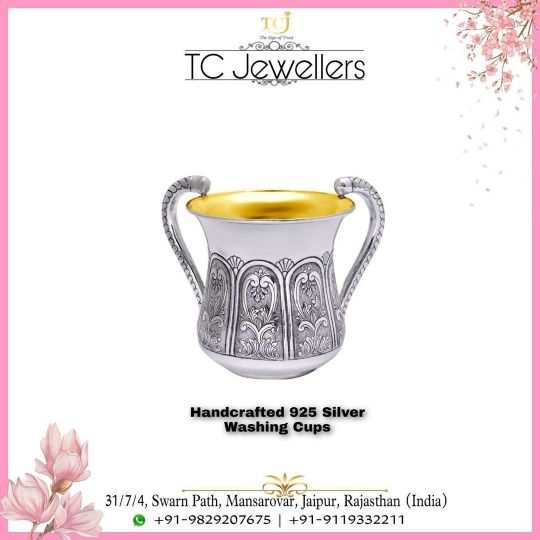
“Netilat yadayim" is the Jewish word depicting the religious washing of hand with the help of a cup. This ritual or more commonly called ablution is the process of getting rid of all body impurities. Traditional Jews use special Jewish washing cups called "Yeddish" for the purpose of ablution. These traditional cups are made in silver and have two handles. The Jewish washing cups therefore play an important part in the religious lives of the people. TC Jewellers offers silver washing cups those are handcrafted by our artisans . #luxuryproducts #washingcup #judaica #sterling #silver925 #handmade #silversmith #stylish #jewish #ritual #jewishbros #india #israel #sterling #silver #antique #shabbatshalom❤️ #jewishsilverware silver #silver #silverware #judaicasupplies #judaicasilver #silverjudaica #jewish #jewishdecor #jewishsupplies #jewishholidays #shabbatdecor #tcjewellersofficial #jewishritual 🇮🇳🤝🇮🇱☘️🌻 (at Mansarovar (Jaipur)) https://www.instagram.com/p/CcyJ37yvugd/?igshid=NGJjMDIxMWI=
#luxuryproducts#washingcup#judaica#sterling#silver925#handmade#silversmith#stylish#jewish#ritual#jewishbros#india#israel#silver#antique#shabbatshalom❤️#jewishsilverware#silverware#judaicasupplies#judaicasilver#silverjudaica#jewishdecor#jewishsupplies#jewishholidays#shabbatdecor#tcjewellersofficial#jewishritual
2 notes
·
View notes
Text

Cream pot made by Paul Revere, 1760s for the merchant Moses Hays. He was prominent in the Boston Jewish community and was a Grand Master of the Massachusetts Grand Masonic Lodge. Brother in law of the famed NY silversmith Myer Myers.
20 notes
·
View notes
Photo

Menorah Topped with Judith Figurine
Germany, late 19th century
The Israel Museum, Jerusalem
“The branches of this Hanukkah lamp are adorned with alternating globes and flowers, in keeping with the Torah's description of the Menorah (Exodus 25:31 ff). Other decorative motifs were added by the silversmith: a peacock with outspread tail behind each light, warriors circling the stem, and at the top, the triumphant figure of Judith holding the head of Holofernes. In Jewish tradition, Judith's act of heroism in killing the Assyrian commander, described in the apocryphal book that bears her name, is closely associated with Hanukkah and its story of defying a pagan invader. This Hanukkah lamp evokes earlier designs from Frankfurt.”
218 notes
·
View notes
Photo

The Jewelry of Jewish Women in Bukhara
Bukhara, a city in Central Asia and a former Emirate, has come to refer to all the Jewish communities in Uzbekistan. The jewelry of the Jewish bride in Bukhara – made of embossed gold plaques stuffed with bitumen and studded with emeralds, rubies, and tourmalines – reflects the wealth of her community. Brides and affluent women adorned their head ornaments with a fragrant rose and their temple ornaments with the feather of a peacock (ketshak). The jewelry typically features sun motifs, lotus flowers, dragon heads, birds, fish, and hearts. At the end of the 19th century, silversmithing was a common occupation among Jews; after the Russian conquest of the area, however, many turned to trading in jewelry.
172 notes
·
View notes
Text
Mediterranean Medley: The Jewish Community of Tunisia
Tunisia is currently making global headlines. A decade ago the Tunisian protest for democracy sparked the “Arab Spring”, which led to vast political shifts in the Middle East. Now, its citizens are fighting to retain their past achievements and curb the ruler's authoritarian pursuits.
The recent events in this small country on the southern shore of the Mediterranean also provide an opportunity to discuss its Jewish community, a community small in numbers yet incredibly diverse in terms of socio-economic status and cultural orientation. This entry is therefore dedicated to exploring the complex history of the community, including the particularly tragic chapter of the Nazi occupation during the Second World War. As always fiction and culinary elements will be weaved into the discussion.
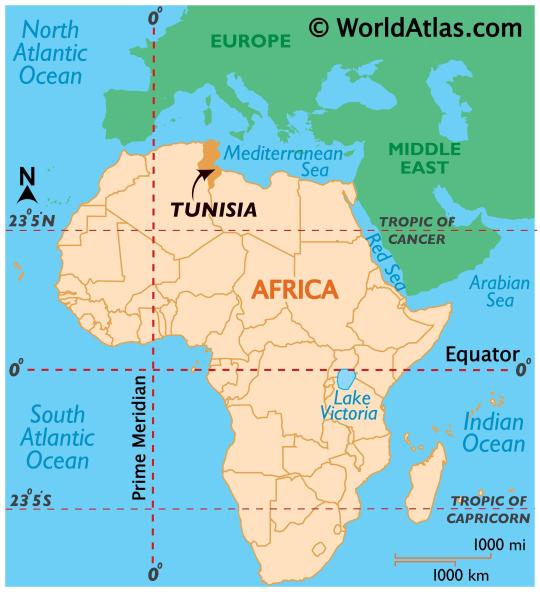
(Tunisia on the map: between Africa and Europe)
Berber, Italian and French Mix
The Jewish community of Tunisia settled mostly in the coastal areas in the cities of Tunis, Sousse, Sfax, Bizerte and Monastir. There were also several rural Berber communities, in which Jews lived a semi-nomadic life.

(The beautiful coast)
The origin of the Jewish community is disputable. Members of the community claim the first settlers migrated from Jerusalem after the destruction of the second temple in 70 CE. Several scholars, however, ascertain that the community originated from the conversion of either Phoenicians or Berber tribes.
Origin aside, archeologists indicate a viable Jewish presence beginning in the fourth century CE. Evidence also shows connection between Tunisian Jews and Jewries in Persia, Israel and Iraq. The Bagdadi community and its Talmudic centers, in particular, was a source of inspiration fueling the local Torah learning, and overall intellectual life.
In the fifteenth century, Andalusian Jews found refuge in Tunisia while escaping the Spanish Inquisition. Their influence is notable in architecture, culture, and clearly cuisine. Another wave of Jewish immigrants arrived to Tunisia from the Italian port city Livorno during the sixteenth and seventeenth centuries. The Livornese Jews, mostly Portuguse Marrano descendants, built maritime trade between North African hubs to European Mediterranean port cities. In 1741, the Livornese community (also called “Grana”) asked for autonomy on the pretext of having a different liturgy. Followed by this act, two separate communities- native and Livornese- were formed. The two sub-communities had their own rabbis, synagogues, cemeteries and philanthropies. The Livornese section, which actually encompassed all European Jews whether they came from Italy, France, Gibraltar or Malta- prided themselves as superior. They refrained from intermarrige with the native Jews, refused to speak Judeo-Spanish and continued speaking Italian. Some of the Livornese became rich bankers and merchants, but many were weavers, tailors, shoemakers, and even lived in poverty relying on charities.
In the cities, since Medieval times, the indegenous Tunisian Jews, lived in the margins of the Muslim areas and the Souks, in quaters named Haras. The Haras became overpopulated starting in the second half of the nineteenth century with poor sanitary conditions, and no running water nor electricity. The residents of the Hara were mostly craftsmen- tailors, potters, leatherworkers and silversmiths. Those who could afford it, left the Hara to settle in the European quarters built by the French.
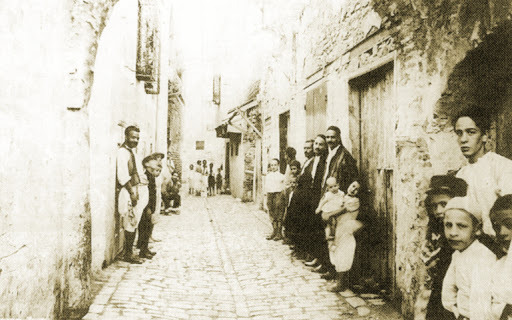
(The Hara of Tunis, image #1)

(The Hara of Tunis, image #2)
The French Colonization, starting in the late nineteenth century, created a new elite of Francophones. The upper Jewish class eagerly fostered French as their mother tongue, named their children in French names and sent their children to schools in Paris. The few, who managed to obtain key posts in the new colonial governments, were granted French citizenship, but the majority including some of the wealthiest families remained with the status of subjects.

(The French Quarter of Tunis)
Despite the strong French influence, Tunisia continued to be fairly diverse as a port country luring people from different parts of the Mediterranean basin. Thus, the Jewish population (unlike their brothers in neighboring Algeria) lived in a multicultural environment, in which Greeks, Maltese, Italians and of course Arabs co-existed and influenced one another.
A Boy in a Ruthless City: The Nazi Occupation through the Eyes of an Adolecent
The cosmopolitan climate described above was the setting of Albert Memmi’s (1920-2020) semi-autobiographical novel, The Pillar of Salt. In the book, Memmi, a distinguished philosopher known for his work on Colonial Studies, disguised himself as Alexandre Mordekhai Bennillouche, a poor Jewish boy growing up in the Hara of the capital, Tunis.

( Albert Memmi)
Bennillouche (or Memmi) begins his account in describing his happy childhood as an age of innocence and unawareness to his poverty and inferior status as a “native Jew”. Gradually, the protagonist discovers the world around him. He excels at school, but suffers from anti-Jewish violence from Chirsitan and Muslim peers. Given his academic performance, he is given a stipend to study in one of the city’s top schools, where he is introduced to the upper circles of the Jewish community and the general European society. This exposure causes a rift in the relationship with his parents, who resent his education wishing for him to continue the family leather business. Although deeply ashamed of his parents - their meager existence and traditional views- Bennillouche is quickly disillusioned from the enchantment of the elite. Being a critical thinker, he spots its insincerity and snobbery, yet he is forced to hide his contempt as he is dependent on their funds for his schooling.

(The capital- Tunis)
The six month Nazi occupation of Tunisia (November 1942- May 1943) reaffirms Bennillouche’s beliefs about the hypocrisy of the elite. During the short- yet traumatic - German presence, Tunisian Jews were subject to constant harassment from the occupiers and general population, and were under the imminent threat of being deported to the death camps in Europe. Yet, the degree of Jewish misery varied based on socio-economic belonging. When the Germans issued a decree for Jewish forced labor, the wealthy ones of the community paid ransom to exempt themselves and their dear ones. Impoverished men- however- were destined to greater hardship.

(Jews assigned for forced labor)
Benillouche (and Memmi himself) was one of the unfortunate people. Despite being friendly with people in high places, and holding a prestigious teaching position, he was deported to a concentration camp in the Saharan desert. There, he suffered from the brutality of the guards, the senseless work, and above all the merciless sun. However, camp was also a place of revelation. The hardship created a sense of comradery between Benillouche and his fellow inmates, of whom he shared similar upbringing. He was even reunited with some old friends, and enjoyed conversing with them in his childhood dialect of Judeo- Arabic, which he neglected in favor of French. In addition, the camp helped him to rediscover and reconnect to his Jewish roots, as he was asked to lead Shabbat prayers as the camp’s intellectual figure.
By the time the camp was released by the Allies, Bennilouche was a more grounded man. He still continued to march according to his original trajectory in the academic world but with a wiser outlook on life.
Topped with Harissa: A Quick Peek to Jewish-Tunisian Cuisine
Even while estranged from his family traditions, Bennilouche always maintained a fondness for his mom’s traditional Tunisian cooking. In fact, he recounts nostalgically the smells of Shabbat dishes cooking slowly in the tiny kitchen of his childhood home. When he matures, he recognizes the power of food as a source of comfort and festivity in a household that is poor and filthy. One of the dishes he highlights is Bkeila (also pronounced Pkeila) - a hearty spinach and beans stew served vegetarian or with beef. Below is Yotam Ottolenghi’s take on it from his latest cookbook Flavor.
Bkeila, Potato and Butter bean Stew - Adapted from Flavor
(See my notes below to simplify the cooking process)
4 cups (80 gram), roughly chopped cilantro
1 ½ cups (30 gram) parsley
14 cups (600 gram) spinach
½ cup (120 ml) olive oil
1 onion (150 gram), finely chopped
5 garlic cloves, crushed
2 green chiles, finely chopped and seeded
1 tbsp plus 1 tsp ground cumin
1 tbsp ground coriander
¾ tsp ground cinnamon
1 ½ tsp superfine sugar
2 lemons: juice to get 2 tbsp and cut the remainder into wedges
1 qt/ 1L vegetable/ chicken stock
Table salt
1 Ib 2 oz/ 500 gram waxy potatoes, peeled and cut into 1 ¼ inch pieces
1 Ib 9 oz/ 700 gram jar or can of butter beans, drained
1.In batches, put cilantro, parsley and spinach in a food processor until finely chopped. Set aside.


(Massive amounts of greens)
2.Put 5 tbsp of olive oil into a large heavy-bottomed pot on medium heat. Add the onion and fry until soft and golden, mixing occasionally (about 8 minutes). Add garlic, chillies and all the spices and cook for another 6 minutes, stirring often.
3.Increase the heat to high and add the chopped herbs and spinach to the pot along with the remaining 3 tbsp olive oil. Cook for 10 minutes, stirring occasionally until the spinach turns a dark green. The spinach should turn a little fried brown but not burn. Stir in the sugar, lemon juice, stalk and 2 tsp salt. Scrape the bottom of the pot if needed. Bring to a simmer, then decrease heat to medium and add the potatoes. Cook until they are soft for about 20-25 minutes and then add the butter beans and cook 5 minutes longer.*
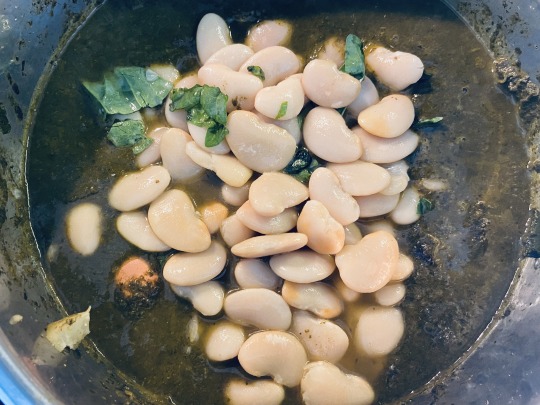
(Butter beans to break the deep green)
4.Divide into bowls and serve with lemon wedges.**
* As this dish was traditionally slow cooked using a slow cooker pot or a pressure cooker could easily do the trick. If using these- do the following: Skip step 1. Saute the onions, garlic, chilli and species as instructed in step 2. Then add the rinsed spinach and herbs. Mix them well with the onions and spices in the bottom. Once the spinach begins to melt, mash them using a hand blender and then add the ingredients described in step 3 (beside the butter beans). Then let it slowly cook until everything softens. In the end, add the butter beans and press on the “stay warm” button.
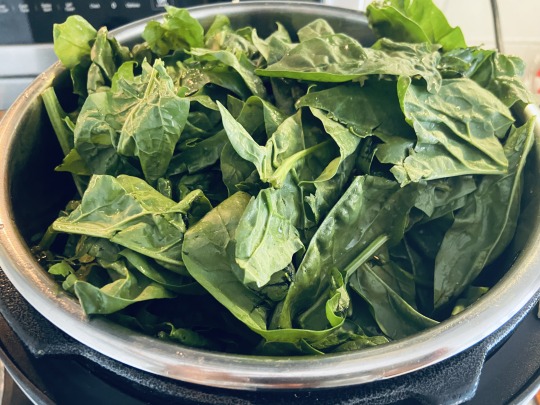
(loading the pot with spinach)
** I served it with bulgur to soak up the liquids a bit (rice, farro or any other grain will work as well). I also added hard boiled eggs for additional protein.

(Healthy and heart)
In addition to the Bkeila- The Tunisian Shabbat table will not be complete without the famous couscous. The process of making it from scratch without a food processor was quite laborious, but the result - whether served sweet with nuts and spices, or savory with meat stew or fish - was considered a delicacy.
The proximity to the Mediterranean shore brought fish dishes to the Jewish- Tunisian repertoire. Fish is mostly eaten fried or cooked as fish balls or oven roasted served with red hot sauce. Meat is also often served spicy, and often chunks of hot merguez sausage are added to stews or shakshuka.
Generally speaking, Tunisian Jews are fond of hot flavors, and their cuisine is potentially the spiciest in the diaspora (perhaps only second to the Yemeni). Harissa paste, now increasingly popular around the world - is liberally used to spice up any dish. This fiery red pepper condiment is added - for example- to the famous Tunisian fricassee, one of Israel's most popular street foods. Click here for a recipe for this tuna loaded sandwich, and here to learn more broadly about Tunisian cuisine.

(Tunisian Sandwich with some Harissa)
8 notes
·
View notes